In the world of culinary art, the way we cook can say as much about our personality as the dishes we prepare. Enter the custom contact grill, a culinary marvel that allows chefs and home cooks alike to express their unique style and preferences in every sizzle and sear. This article delves into the process of crafting a dream grill, the benefits of customization, and the future trends shaping the industry. Whether you’re a seasoned grill master or a beginner looking to elevate your cooking game, this guide will walk you through the essentials of bringing your custom contact grill project to life.
Discover the Art of Custom Contact Grill Manufacturing
In the realm of culinary artistry, the contact grill has emerged as a versatile and efficient tool for achieving perfectly seared and flavorful dishes. But what if you could tailor this essential kitchen appliance to your exact specifications? Enter the world of custom contact grill manufacturing, where artistry meets technology to create cooking tools that are as unique as the chefs who wield them.
The process begins with a vision, often sparked by a desire for a grill that fits the specific needs of a commercial kitchen or the personal preferences of a home chef. Whether it’s the size, the heat distribution, or even the design aesthetic, custom contact grills offer a canvas for culinary creativity.
Materials are meticulously selected to ensure durability and performance. High-quality stainless steel is a staple, not just for its longevity but also for its ability to maintain even heat distribution. The thickness of the metal, the type of handle, and even the finish can all be customized to match the desired look and feel of the grill.
Once the materials are chosen, the design phase kicks into high gear. Engineers and designers work in tandem to create a blueprint that balances functionality with form. This is where the magic happens—where the grill’s shape, the placement of the heating elements, and the size of the cooking surface are all tailored to enhance the cooking experience.
In the hands of skilled artisans, these blueprints transform into reality. The cutting and bending of metal are precise, each fold and seam a testament to the craftsmanship involved. The welding process is both an art and a science, requiring not only technical skill but also an understanding of the materials’ properties.
As the grill takes shape, the focus shifts to the internal components. The heating elements must be carefully calibrated to provide the right amount of heat, and the temperature control system must be reliable and responsive. This is where the engineering expertise truly shines, ensuring that the grill will perform consistently over time.
The aesthetics of the custom contact grill are just as important as its functionality. The exterior is polished, coated, or plated to achieve the desired look. Custom graphics, branding, or even unique patterns can be added to the surface, turning the grill into a statement piece that complements the kitchen’s decor.
Safety is paramount in the manufacturing process. The grill must be designed with user protection in mind, featuring slip-resistant surfaces, easy-to-use controls, and fail-safe mechanisms to prevent overheating. Each component is rigorously tested to ensure it meets the highest safety standards.
Once the manufacturing process is complete, the custom contact grill is ready for its debut. Chefs can now experiment with their recipes, knowing that their cooking tool is perfectly suited to their culinary style. Whether it’s for a bustling restaurant or a personal kitchen, the custom contact grill is a testament to the power of customization in enhancing the cooking experience.
The beauty of custom contact grill manufacturing lies in its ability to adapt to the ever-evolving world of food preparation. New technologies, such as adjustable heat zones and smart features, are continuously being integrated into these cooking marvels. This not only expands the possibilities in the kitchen but also keeps chefs at the forefront of culinary innovation.
In conclusion, the art of custom contact grill manufacturing is a blend of science, engineering, and artistry. It’s a journey from concept to creation, where every detail is carefully considered to deliver a cooking tool that is not just a part of the kitchen but a catalyst for culinary excellence.
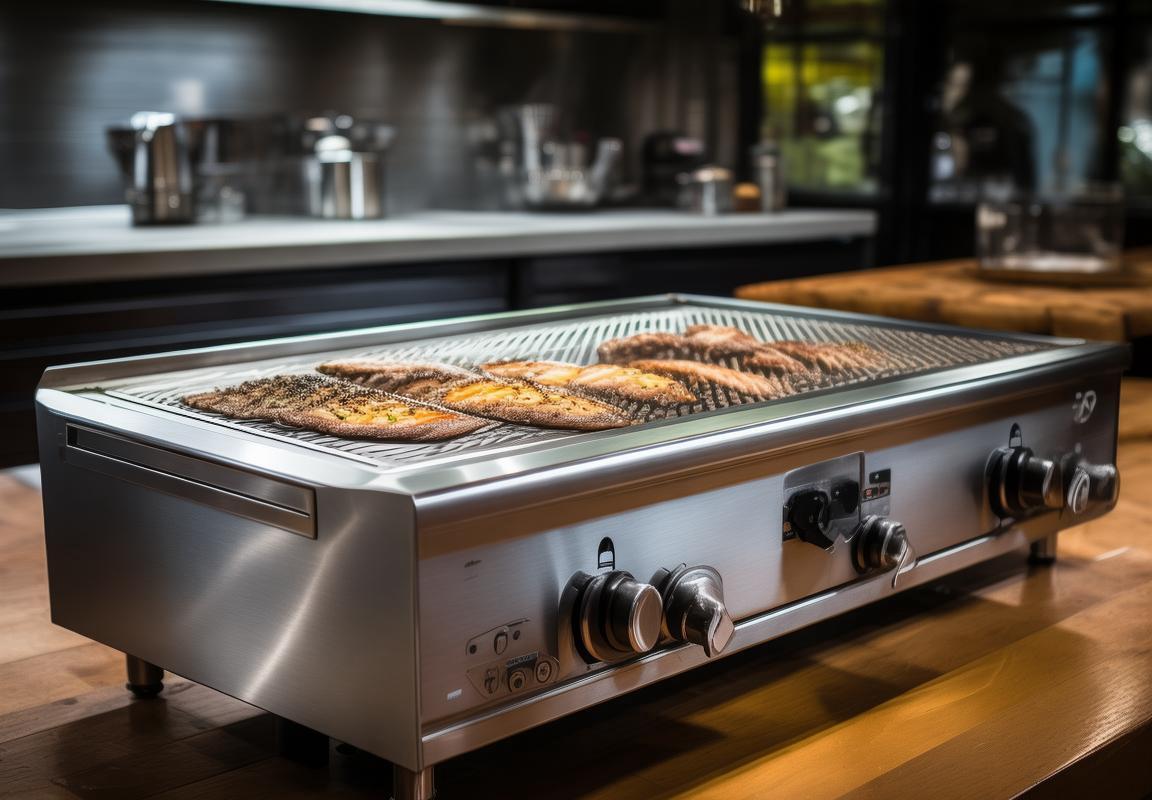
The Significance of Custom Contact Grills
Custom contact grills have become a game-changer in the world of outdoor cooking, offering a host of unique benefits that cater to the diverse needs and preferences of culinary enthusiasts. These grills are not just a cooking tool; they are a canvas for personal expression, a testament to the art of tailoring functionality to individual tastes.
The ability to customize a contact grill allows for a level of personalization that is unmatched in the market. Imagine owning a grill that is not just practical but also a reflection of your personality or the style of your outdoor space. The significance of these custom grills lies in several key aspects.
Firstly, a custom contact grill offers unparalleled versatility. Whether you’re a fan of seared steaks, perfect pancakes, or delicate sandwiches, a tailor-made grill can be designed to optimize cooking times and temperatures for your favorite dishes. This means that every time you fire up your grill, you’re guaranteed the perfect outcome, without having to compromise on taste or texture.
Secondly, the aesthetic appeal of custom grills cannot be overstated. In an age where aesthetics are just as important as functionality, a custom grill can be a stunning addition to any patio or backyard. From sleek, modern designs to rustic and traditional looks, the options are limitless. This not only enhances the visual appeal of your outdoor area but also serves as a conversation starter, showcasing your unique taste and style.
Thirdly, the environmental impact of custom contact grills is an important consideration. Many custom grill manufacturers prioritize sustainable practices, using eco-friendly materials and manufacturing processes. This means that while you’re enjoying the benefits of a custom grill, you’re also doing your part to reduce your carbon footprint and promote a healthier planet.
Moreover, a custom contact grill can often come with enhanced safety features. With personalized design, you can request specific safety measures that align with your needs. Whether it’s heat-resistant handles, anti-slip surfaces, or childproof locks, the ability to customize ensures that your grill is as safe as it is stylish.
Another significant advantage is the potential for cost savings in the long run. While custom grills may have a higher upfront cost compared to off-the-shelf models, they are often built to last. The high-quality materials and craftsmanship ensure that your grill will stand the test of time, reducing the need for frequent replacements. This longevity translates to savings over the years, as you’ll be using the same grill for decades.
Custom contact grills also cater to the specific dietary requirements of individuals. With a myriad of cooking surfaces and options, from non-stick to cast iron, you can tailor your grill to accommodate various cooking techniques and dietary preferences. This inclusivity is particularly important for families with members who follow special diets, ensuring that everyone can enjoy delicious meals prepared on the same grill.
Furthermore, the process of customizing a contact grill fosters a sense of connection with the product. When you invest time and thought into designing your grill, it becomes more than just a kitchen appliance; it’s an extension of your lifestyle and identity. This personal connection can lead to a deeper appreciation for the cooking experience, making every meal feel special.
In the realm of social gatherings, custom grills can set the tone for the entire event. They serve as a focal point that encourages interaction and camaraderie. A unique, custom-built grill can elevate the experience of outdoor dining, turning it into a memorable and enjoyable occasion for everyone involved.
Lastly, the process of selecting and customizing a contact grill can be a rewarding experience in itself. It’s an opportunity to learn more about the world of outdoor cooking, the materials used, and the various cooking techniques. This knowledge can enhance your culinary skills and provide you with a greater appreciation for the art of cooking.
In summary, the significance of custom contact grills extends beyond their ability to cook delicious meals. They represent a blend of personalization, aesthetics, environmental responsibility, safety, cost-effectiveness, inclusivity, and a deeper connection to the cooking experience. Whether for a culinary enthusiast or a family looking to enhance their outdoor dining experience, a custom contact grill is a valuable investment that can bring joy and functionality to your backyard for years to come.
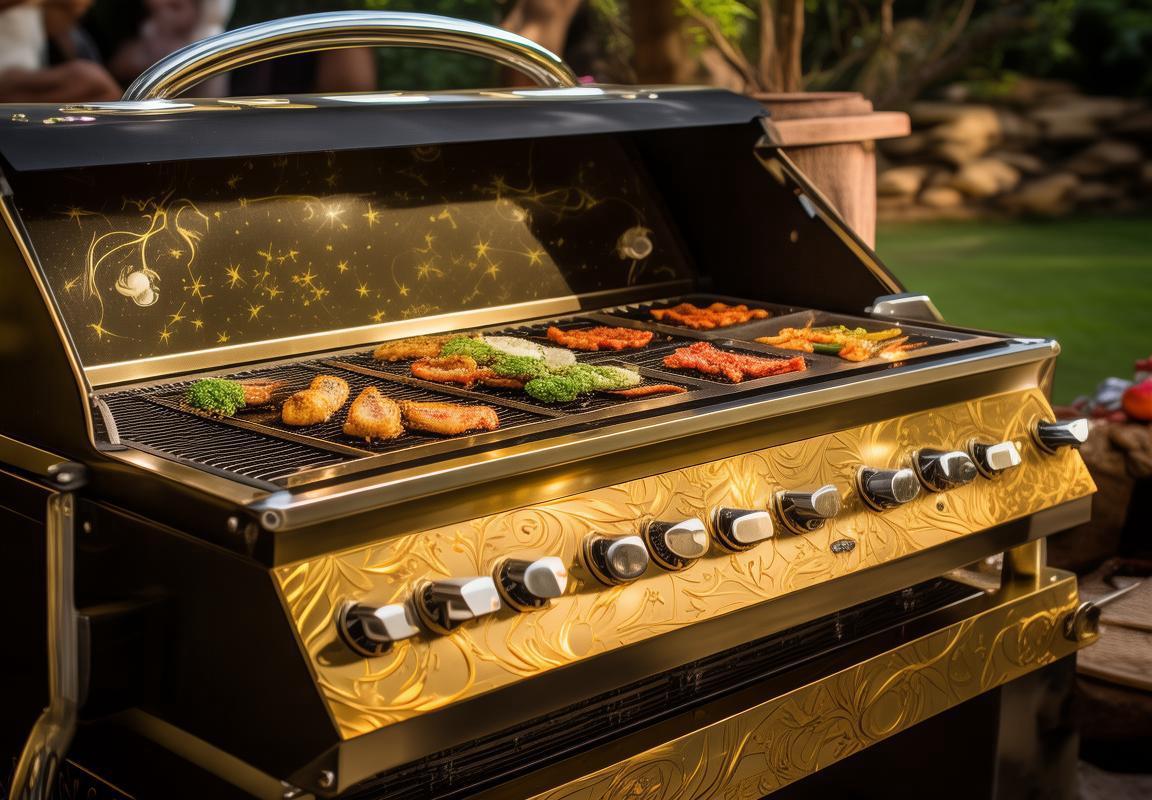
How a Contact Grill Factory Creates Your Dream Grill
In the realm of culinary appliances, the contact grill stands out as a versatile and efficient cooking tool. But what goes on behind the scenes at a contact grill factory to transform a simple metal plate into your dream grill? Let’s delve into the intricate process that brings these culinary wonders to life.
The journey begins with meticulous planning and design. Each custom contact grill is crafted to meet the specific needs and preferences of the customer. The factory starts by gathering detailed requirements, from the size and shape of the grill to the type of cooking surface and any additional features requested. This information is then passed on to the design team, who uses advanced software to create a virtual blueprint of the grill.
Once the design is finalized, the manufacturing process kicks off with precision engineering. The factory’s skilled craftsmen use high-quality stainless steel, known for its durability and resistance to rust, to form the base of the grill. This metal is carefully selected to ensure it can withstand the high temperatures and pressures of grilling without compromising on performance.
The design phase is crucial for the functionality of the grill. The heat distribution is meticulously calculated to ensure even cooking across the entire surface. The factory employs sophisticated technology to create a uniform heat pattern, preventing hot spots that can burn food. The design also includes the placement of the cooking surface, which can be flat for traditional grilling or have ridges for enhanced searing.
After the metal has been cut and shaped, it moves to the welding station. Here, skilled welders join the pieces together with precision, ensuring that the grill is not only structurally sound but also aesthetically pleasing. The welding process is a delicate balance of heat and pressure, requiring years of experience to execute perfectly.
Once the grill is assembled, it undergoes a series of quality control checks. These checks are designed to ensure that every aspect of the grill meets the highest standards. The factory tests the heat distribution, the durability of the welding, and the overall functionality of the grill. Any imperfections are addressed immediately, often through re-welding or replacing parts.
Customization is where the contact grill factory truly shines. The grill can be tailored with various cooking surfaces, from non-stick coatings to cast iron grates. Some customers opt for built-in temperature controls, digital displays, or even Bluetooth connectivity for remote operation. The factory’s team of artisans applies these customizations with care, ensuring that each grill is as unique as the customer who ordered it.
Once the customizations are complete, the grill is ready for the finishing touches. This includes polishing the surfaces to a mirror-like shine and applying any necessary protective coatings. The factory takes pride in the craftsmanship of each grill, making sure it not only performs well but also looks impressive on any kitchen counter.
Before the grill is packaged and shipped, it is subjected to a final round of testing. This ensures that the grill is not only functional but also safe to use. The factory adheres to strict safety standards, checking for any potential hazards such as sharp edges or loose parts.
Finally, the grill is carefully packaged to protect it during transit. The factory uses sturdy boxes and protective materials to ensure that the grill arrives in perfect condition. Each grill is accompanied by a user manual and any additional accessories that the customer has requested.
In essence, the creation of a custom contact grill is a blend of art and science. It’s a process that requires a deep understanding of materials, design, and customer satisfaction. The factory’s commitment to quality and customization ensures that every grill that leaves the premises is a testament to the craftsmanship and dedication of the entire team.
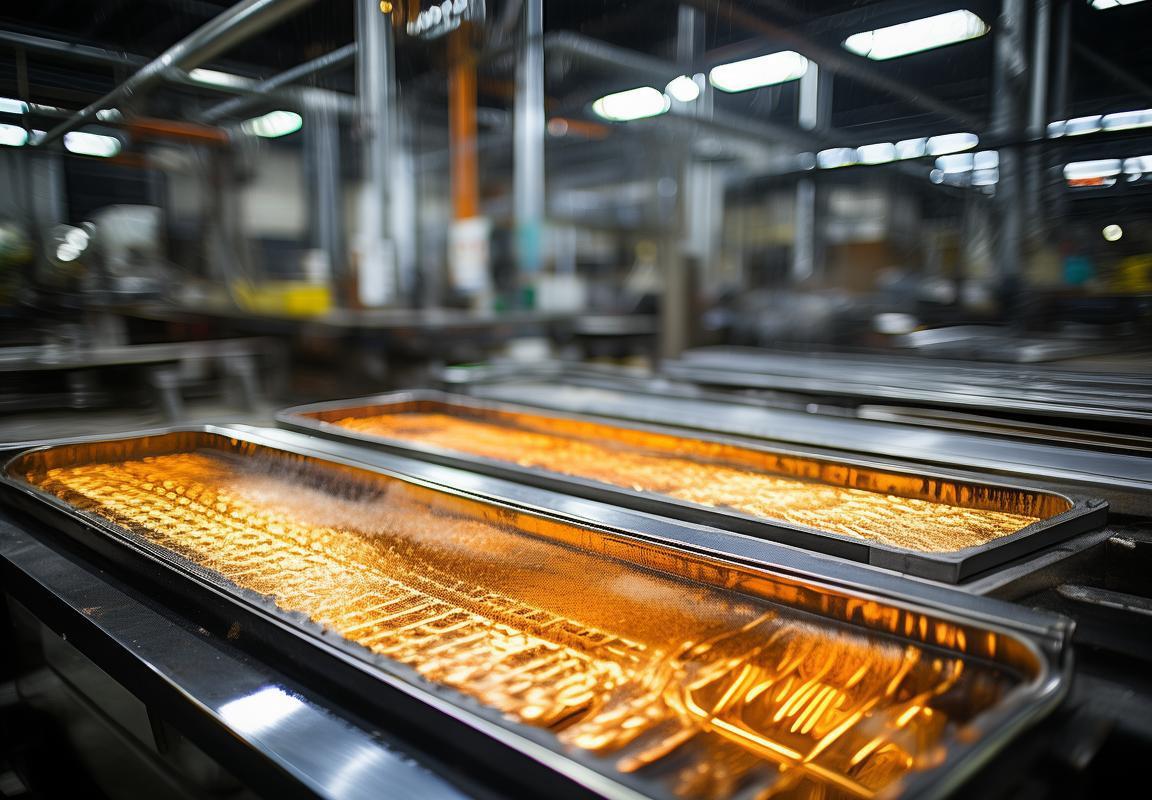
The Benefits of Choosing a Custom Contact Grill
In the world of outdoor cooking, the contact grill stands out as a versatile and efficient appliance. Opting for a custom contact grill brings a host of benefits that can elevate your grilling experience to new heights. Here’s a closer look at the advantages of choosing a custom contact grill:
Customization Tailors to Your PreferencesThe beauty of a custom contact grill lies in its ability to be tailored to your specific needs. Whether it’s the size of the grill, the type of cooking surface, or the heat distribution, every aspect can be designed to fit your personal style and cooking habits. Imagine a grill that perfectly matches the size of your kitchen space or one that’s designed to handle larger gatherings with ease.
Enhanced Cooking ExperienceWith a custom contact grill, you’re not just purchasing a piece of equipment; you’re investing in an enhanced cooking experience. The ability to adjust the cooking surface and the heat settings to your preference means you can experiment with different cooking techniques and achieve the perfect sear on your meats, fish, or vegetables. This level of control is something you might not find in a standard, off-the-shelf model.
Improved Heat DistributionOne common issue with many grills is uneven heat distribution, which can lead to undercooked or burnt food. Custom contact grills can be engineered with advanced heat distribution systems to ensure that every part of the grill reaches and maintains the desired temperature. This consistency in heat is crucial for achieving that perfect char on your steak or that golden brown crust on your baked potatoes.
Unmatched DurabilityA custom contact grill is built to last. High-quality materials and meticulous craftsmanship go into creating these grills, ensuring that they can withstand the rigors of frequent use. Whether you’re a weekend warrior or a dedicated grill master, the durability of a custom grill means you won’t have to worry about frequent repairs or replacements.
Unique Design and AestheticsPersonalization isn’t just about functionality; it’s also about style. A custom contact grill allows you to choose from a variety of designs, colors, and finishes to match your kitchen decor or your personal taste. From sleek and modern to rustic and traditional, the design possibilities are virtually endless, making your grill not just a cooking tool but also a statement piece.
Healthier Cooking OptionsOne of the standout benefits of a contact grill is its ability to cook with less oil and fat compared to traditional grilling methods. This not only makes your food healthier but also reduces the cleanup time. A custom contact grill can be designed with non-stick surfaces and precise temperature controls to ensure that your cooking is as healthy as it is delicious.
Increased VersatilityWhile traditional grills are great for grilling, a custom contact grill can often offer more versatility. With features like adjustable cooking plates and various attachments, you can transform your grill into a multi-functional cooking station. From grilling to searing, sautéing, and even baking, a custom contact grill can help you prepare a wide array of dishes with ease.
Personalized Service and SupportWhen you invest in a custom contact grill, you’re not just buying a product; you’re also gaining access to personalized service and support. Custom manufacturers often offer exceptional customer service, from the initial design consultation to ongoing technical support. This ensures that you have the guidance you need to make the most out of your custom grill.
Community and NetworkingChoosing a custom contact grill can also open up opportunities for networking and community engagement. Many custom grill manufacturers foster a sense of community among their customers, offering workshops, events, and even online forums where grill enthusiasts can share tips, recipes, and experiences.
Environmental ResponsibilityLastly, a custom contact grill can be designed with environmental considerations in mind. From using sustainable materials to ensuring energy efficiency, these grills can be part of a greener lifestyle. By investing in a custom grill that aligns with your environmental values, you’re contributing to a more sustainable future.
In summary, the benefits of choosing a custom contact grill are multifaceted, offering not just a superior cooking experience but also a statement of personal style, durability, and commitment to health and the environment.

The Customization Process: From Concept to Completion
Understanding the journey from a simple concept to a beautifully crafted custom contact grill is a blend of artistry and precision. Here’s an intimate look into the process:
In the heart of the factory, engineers and designers gather to brainstorm the initial concept. They consider the client’s vision, from the desired aesthetics to the specific features they want in their grill. The concept evolves from a sketch or a rough design into a detailed blueprint that outlines the grill’s structure, size, and design elements.
The blueprint then guides the selection of materials. Each component must be durable, heat-resistant, and able to withstand the rigors of cooking. High-quality stainless steel, aluminum, and other metals are chosen for their longevity and ability to distribute heat evenly. The materials are sourced from reputable suppliers, ensuring that only the best is used in creating the custom grill.
Once the materials are secured, the cutting begins. The factory’s advanced machinery meticulously cuts the metal to the precise dimensions required for the grill’s design. This stage is crucial, as any inaccuracies can affect the overall quality and performance of the grill.
With the pieces cut to size, the welding process takes center stage. Skilled welders join the metal components with precision, ensuring a strong and lasting bond. The welding technique used can vary depending on the design and the type of metal, but the goal is always the same: to create a seamless and robust structure.
After the welding is complete, the grill moves through a series of sanding and polishing stations. The rough edges are smoothed out, and the surface is prepared for painting or anodizing. This stage is not just about aesthetics; it’s also about ensuring that the grill is easy to clean and maintains its appearance over time.
The customization process often involves adding unique features or accessories. This could include adjustable heat zones, non-stick coatings, or even built-in thermometers. The factory’s team works closely with the client to ensure these additions are integrated seamlessly into the grill’s design, without compromising its integrity.
As the grill takes shape, it’s subjected to rigorous quality control checks. Engineers test the grill’s ability to maintain even heat distribution, its structural integrity, and its resistance to wear and tear. These tests are critical in ensuring that the final product meets the highest standards of quality and safety.
Once the grill passes all quality checks, it’s ready for the finishing touches. This could involve applying a high-gloss paint, a protective coating, or a custom finish that matches the client’s preferences. The finish not only enhances the grill’s appearance but also adds an extra layer of protection against corrosion and heat.
In the final stages, the grill is assembled with all its components, including the handles, hinges, and control panels. The factory’s technicians pay close attention to the assembly process, ensuring that every part is correctly aligned and functions as intended.
Before the grill is packaged and shipped, a final inspection is conducted. This comprehensive check ensures that every aspect of the grill meets the client’s specifications and the factory’s quality standards. It’s a moment of pride and satisfaction, as the custom contact grill is about to leave the factory and find its new home.
The journey from concept to completion is a testament to the craftsmanship and attention to detail that goes into creating a custom contact grill. It’s a process that requires patience, expertise, and a deep understanding of the client’s needs and desires. The end result is a piece that not only serves as a functional cooking tool but also as a statement of personal style and culinary passion.
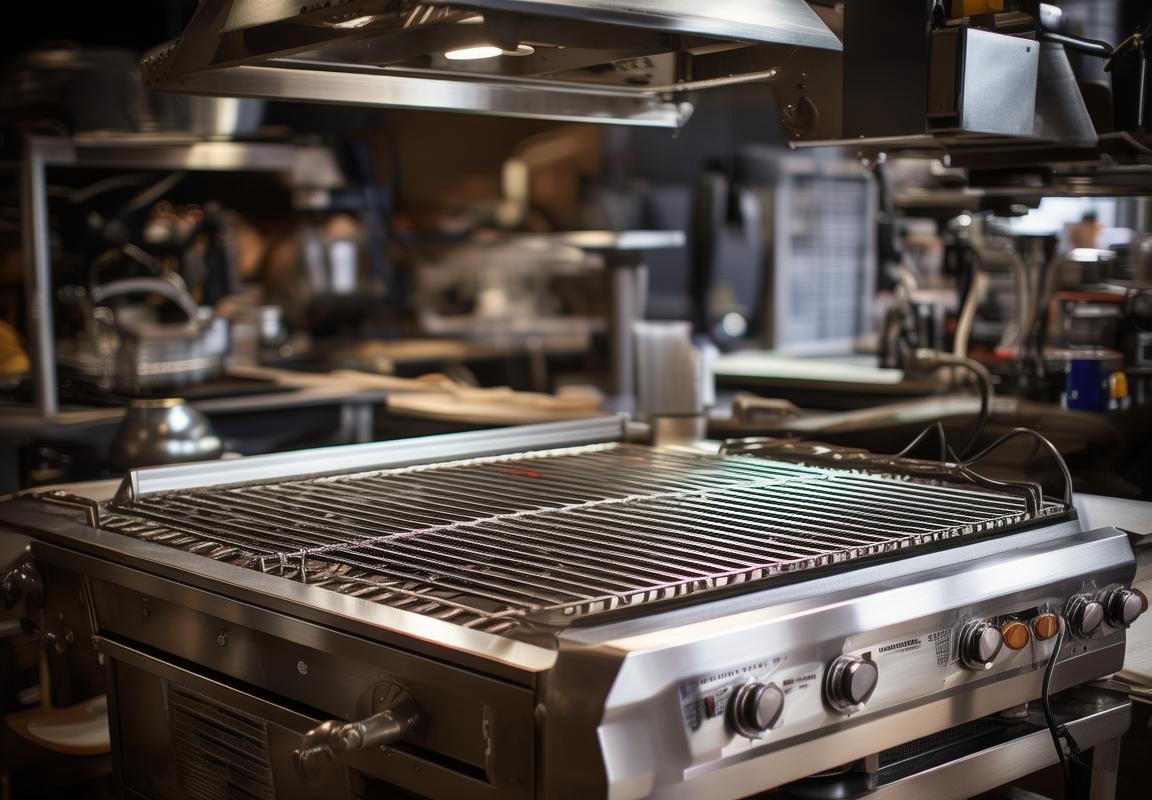
The Role of Innovation in Contact Grill Design
In the ever-evolving world of culinary appliances, contact grills have seen a remarkable transformation. Innovation plays a pivotal role in shaping the design and functionality of these grills, making them not just cooking tools but also works of art. Let’s delve into how innovation drives the design of contact grills.
Grill manufacturers are constantly pushing the boundaries with advanced materials. The use of high-quality stainless steel, for instance, not only enhances the durability of the grill but also improves heat distribution. This material’s sleek finish and resistance to corrosion mean that your custom contact grill will look as good as new for years to come.
Smart technology integration is another innovation that has revolutionized contact grill design. Modern grills often come equipped with digital temperature controls, allowing users to set exact cooking temperatures. This precise control ensures that food is cooked to perfection, every time. Additionally, some models feature Bluetooth connectivity, enabling users to monitor and adjust the grill remotely through their smartphones.
The design of contact grills has also been influenced by ergonomics and user convenience. Innovative features such as adjustable height settings, easy-to-clean surfaces, and ergonomic handles make the cooking process more comfortable and less of a chore. These thoughtful design choices are a testament to the commitment of grill manufacturers to create appliances that cater to the needs of their customers.
Innovation in contact grill design has also led to the development of unique cooking surfaces. Traditionally, grills had a flat surface, but now, manufacturers offer a variety of textures, including grooved and ridged designs. These textures provide more surface area for food to sear, creating a more flavorful and attractive finish. The ability to choose from different surface types is just one more way that innovation has expanded the possibilities for custom contact grills.
Energy efficiency is a key focus of innovation in contact grill design. Newer models are designed to use less energy while still maintaining high cooking temperatures. This not only helps reduce utility bills but also aligns with the growing demand for sustainable and eco-friendly products. The inclusion of energy-saving features is a clear indication of how innovation is shaping the future of contact grills.
Safety features have also seen a significant upgrade thanks to innovation. Modern contact grills come with anti-lock features, ensuring that the grill stays open during cooking for safe access to the food. Some models even have built-in timers and temperature alarms, which prevent overcooking and potential fires. These safety innovations are a crucial aspect of the design process, as they protect both the user and the appliance.
Innovation in contact grill design has also led to the creation of modular systems. Users can now purchase additional components, such as extra cooking surfaces or accessories, to expand the functionality of their grills. This modular approach allows for a personalized cooking experience, where users can tailor their grill to their specific needs and preferences.
The design of contact grills has also been influenced by health and wellness trends. With an increasing focus on grilling without the use of excessive oil or butter, manufacturers have developed non-stick surfaces and cooking techniques that minimize the need for added fats. This not only makes for healthier meals but also simplifies the cleaning process.
Lastly, innovation has brought about a wealth of design options and aesthetics. From sleek, modern designs to classic, vintage looks, there’s a contact grill out there for every taste and style. The ability to customize the appearance of your grill, whether it’s through colors, finishes, or unique features, is a direct result of the creative and innovative approach that manufacturers take in their design process.
In conclusion, the role of innovation in contact grill design is undeniable. It has transformed the way we cook, making contact grills not just cooking appliances but also symbols of modern culinary innovation. As technology continues to advance, we can expect even more groundbreaking features and designs to emerge, further enhancing the appeal and functionality of custom contact grills.
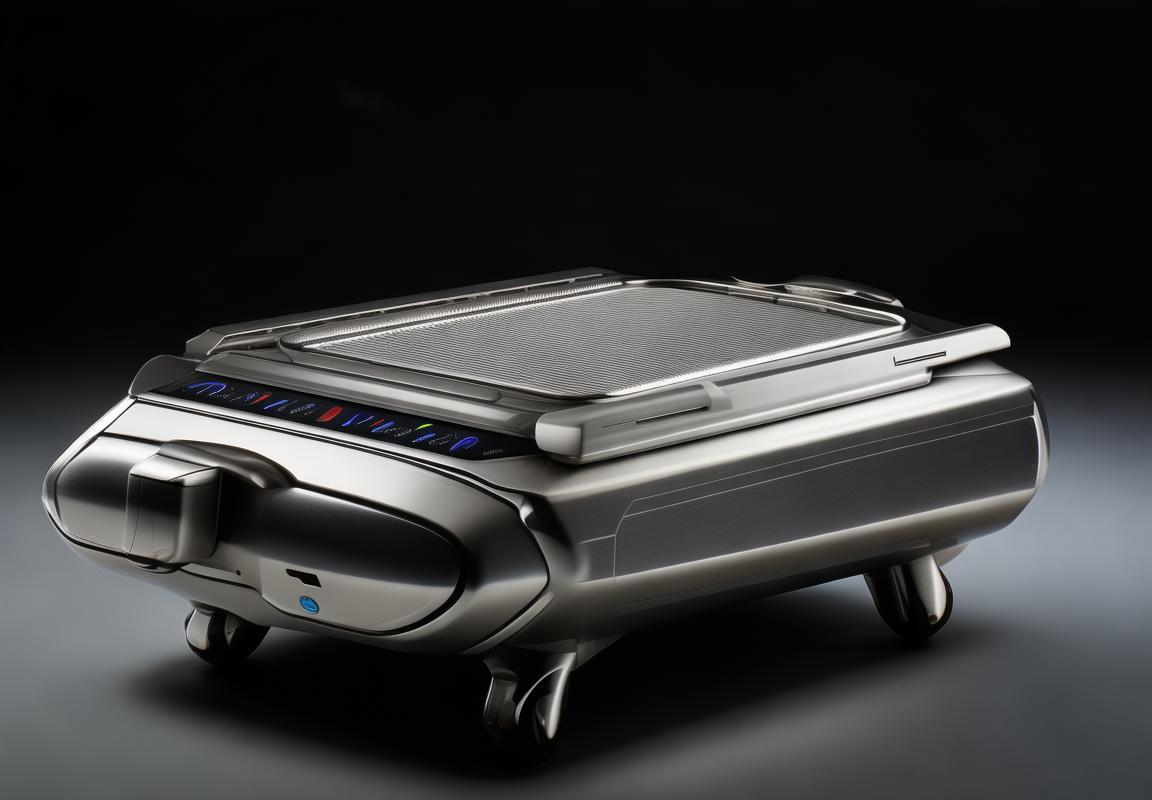
The Environmental Impact of Custom Grills
Custom grills, while often a symbol of personal style and culinary preference, carry a significant environmental footprint. Understanding the impact these custom grills have on our planet can lead to more sustainable choices and practices within the manufacturing process.
The production of custom grills involves various stages that contribute to environmental concerns. From the extraction of raw materials to the manufacturing, transportation, and eventual disposal, each step has its implications. Let’s delve into the specifics.
-
Raw Material Extraction: The foundation of a custom grill lies in the materials used, which often include metals like stainless steel, cast iron, and aluminum. These materials are typically mined from the earth, a process that can lead to habitat destruction, soil erosion, and water contamination. The extraction of metals also releases greenhouse gases, further contributing to climate change.
-
Energy Consumption: The manufacturing process for custom grills is energy-intensive. Factories rely on electricity, which is often generated from fossil fuels, to power machinery and heat the metals for forging and welding. This reliance on non-renewable energy sources not only increases greenhouse gas emissions but also perpetuates the depletion of natural resources.
-
Transportation Emissions: Once the custom grills are manufactured, they must be transported to distributors and retailers. This often involves long distances and multiple modes of transportation, each emitting carbon dioxide and other pollutants. The larger and heavier the grill, the greater the environmental impact of its delivery.
-
Packaging: Custom grills are packaged to ensure they arrive in perfect condition. However, this packaging is often excessive, using materials like Styrofoam, bubble wrap, and plastic bags, all of which contribute to waste and pollution. Additionally, the production of these packaging materials is itself environmentally unfriendly.
-
End-of-Life Disposal: When custom grills reach the end of their useful life, they often end up in landfills. The metals can be recycled, but the process is not always efficient or widespread. Many grills contain other materials that are not recyclable, leading to long-term environmental damage.
-
Resource Efficiency: Innovations in custom grill design and manufacturing are increasingly focusing on resource efficiency. This includes the use of recycled materials, the reduction of packaging, and the development of more energy-efficient production methods. By optimizing the use of resources, manufacturers can reduce their environmental impact.
-
Sustainable Materials: The shift towards sustainable materials is a significant step in mitigating the environmental impact of custom grills. This involves exploring alternatives to traditional metals, such as recycled stainless steel or biodegradable plastics. These materials can offer the same functionality while being more eco-friendly.
-
Lifecycle Analysis: Understanding the full lifecycle of a custom grill can help identify areas for improvement. This analysis takes into account the entire journey from raw material extraction to disposal, allowing manufacturers to pinpoint where they can make the most significant changes.
-
Consumer Education: Educating consumers about the environmental impact of their purchases is crucial. By making information about the sustainability of custom grills more accessible, consumers can make more informed decisions that align with their environmental values.
-
Policy and Regulation: Governments and regulatory bodies play a pivotal role in shaping the environmental impact of custom grill manufacturing. Implementing policies that encourage sustainable practices and penalize harmful ones can drive change across the industry.
In conclusion, the environmental impact of custom grills is multifaceted, encompassing every stage of their lifecycle. While the industry has made strides in sustainability, there is still much work to be done. By focusing on resource efficiency, sustainable materials, and consumer education, the custom grill industry can move towards a more environmentally conscious future.
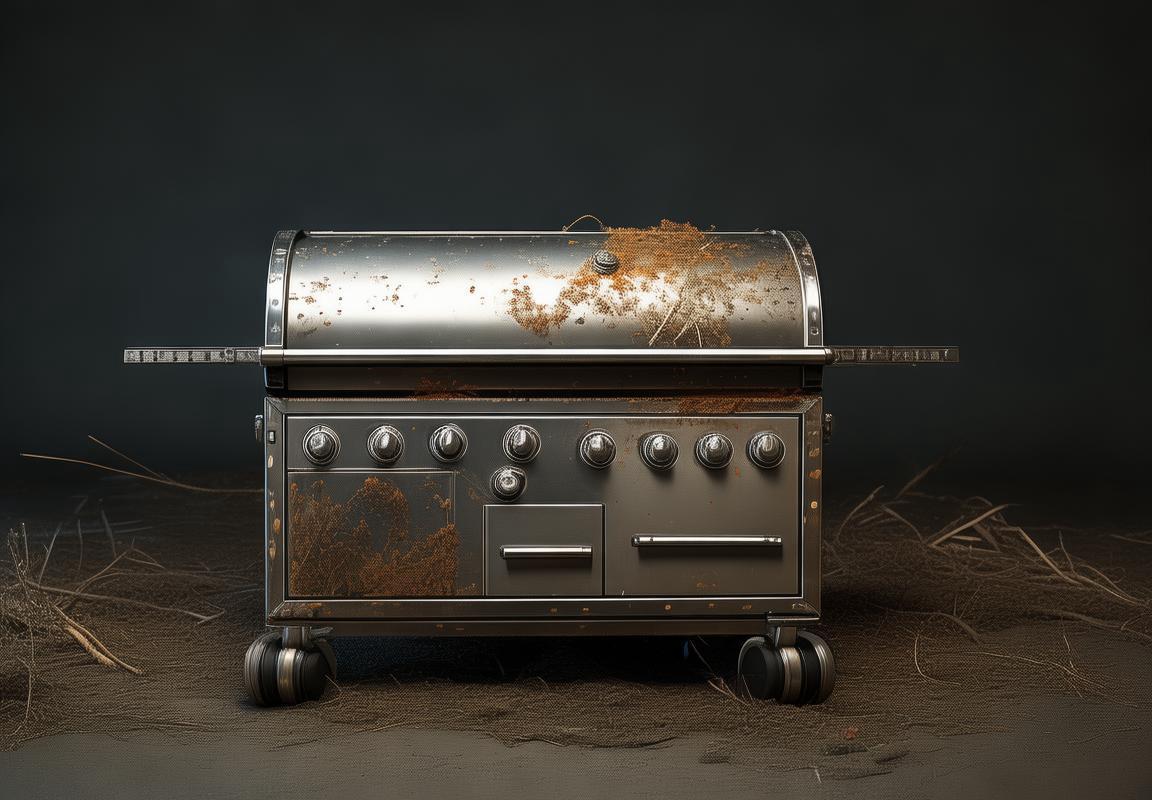
Testimonials: What Our Clients Are Saying
In the heart of our Contact Grill Factory, we pride ourselves on the testimonials that pour in from our satisfied clients. Here are some of the voices that echo our commitment to quality and innovation:
“Absolutely thrilled with the custom grill I received from this factory. The build quality is top-notch, and the attention to detail is incredible. I can’t recommend them enough!” – Mark T., Outdoor Chef
“The team at the Contact Grill Factory was so accommodating throughout the entire customization process. They really listened to my needs and delivered a grill that exceeds my expectations. It’s a game-changer for my barbecue parties!” – Sarah L., Grill Enthusiast
“I was hesitant to go with a custom grill, but the factory’s reputation spoke for itself. They not only crafted a grill that matches my brand identity but also made it eco-friendly. I’m proud to showcase it at our company events.” – John R., Marketing Manager
“The customer service was exceptional. The factory kept me updated every step of the way, and their willingness to make adjustments to my design was impressive. The final product is a stunning piece that has garnered a lot of attention.” – Emily K., Interior Designer
“I was looking for a unique contact grill for my restaurant, and the factory delivered. The custom design not only fits our kitchen perfectly but also allows for a more efficient cooking process. Our customers are loving the results!” – Mike S., Chef
“The quality of the materials used is evident in every aspect of the grill. The factory’s attention to durability and functionality is commendable. I’ve received so many compliments on our custom grill; it’s a conversation starter every time.” – Lisa B., Restaurant Owner
“The design team at the Contact Grill Factory was incredibly creative. They took my initial idea and transformed it into something truly special. The grill not only serves its purpose but also adds a touch of elegance to our outdoor space.” – David M., Homeowner
“The factory’s commitment to sustainability is refreshing. They offered eco-friendly options for the grill, which aligns with our company’s values. We’re proud to be part of the solution, not the problem.” – Emma H., Environmental Advocate
“The custom grill has been a hit with my family and friends. The build quality is second to none, and the unique features make it stand out from the crowd. I’m glad I chose this factory for our family barbecue setup.” – Tom G., Family Man
“The factory’s willingness to customize every aspect of the grill was impressive. From the size to the color, they made sure it was tailored to our specific needs. It’s a perfect match for our outdoor kitchen.” – Rachel P., Home Renovator
“I was looking for a durable and versatile grill, and the Contact Grill Factory delivered. The design is both stylish and practical, and the factory’s customer service is unparalleled. Highly recommended!” – Chris D., Outdoor Enthusiast
“The grill is a masterpiece. The factory’s craftsmanship is evident in every detail, and the custom features make it perfect for our event space. Our clients are delighted with the cooking experience it provides.” – Alex W., Event Planner
“The factory’s ability to turn a simple concept into a reality is remarkable. The custom grill has become a centerpiece in our backyard, and we’re grateful for the factory’s dedication to excellence.” – Ben F., Landscape Architect
“The testimonials speak for themselves. The Contact Grill Factory’s commitment to quality and customer satisfaction is unmatched. I’m confident that anyone choosing their services will be just as impressed as I was.” – Olivia J., Satisfied Customer
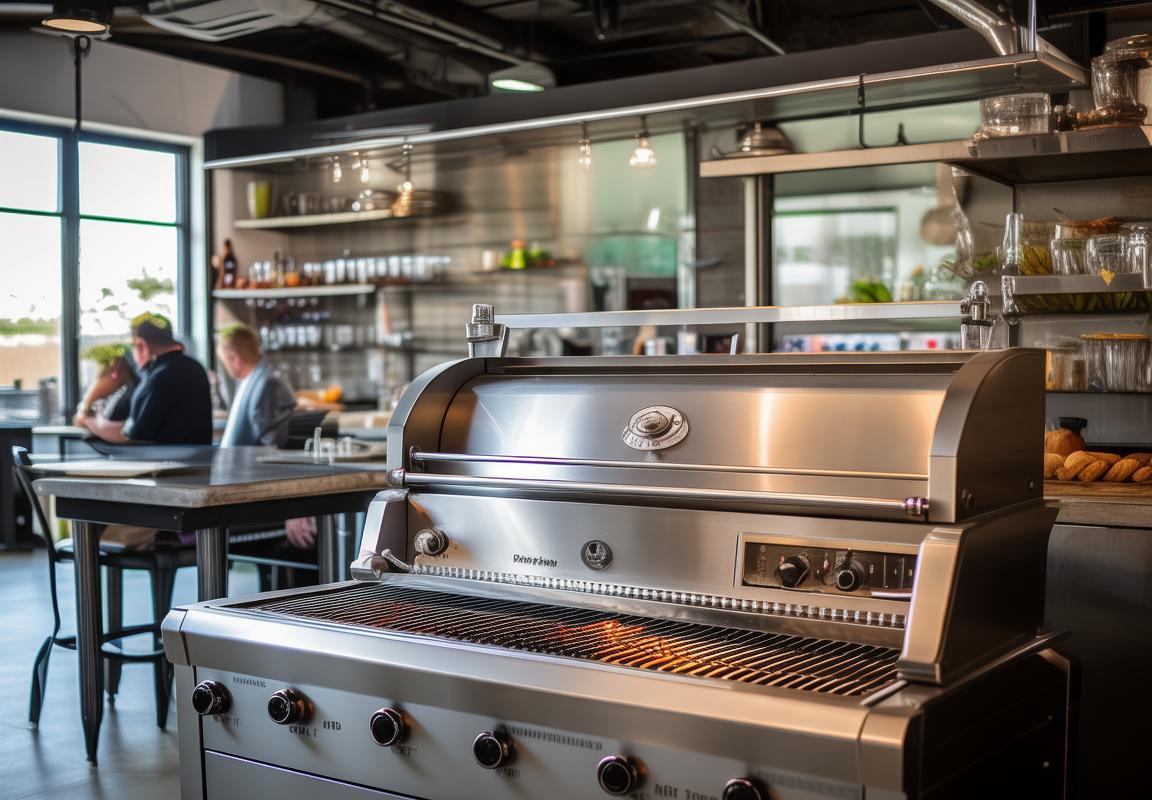
The Future of Contact Grill Customization
In the ever-evolving world of culinary appliances, contact grill customization is not just a trend; it’s a testament to the power of personalization. The future of this niche market is poised to bring even more innovative and sustainable solutions to the table. Here’s a glimpse into what the future might hold for contact grill customization.
Grill tech is advancing rapidly, with smart features becoming increasingly common. Imagine a contact grill that not only adjusts heat settings based on the type of food being cooked but also syncs with your smartphone to provide real-time cooking tips and recipes. The integration of IoT (Internet of Things) could lead to a grill that learns your preferences over time, making cooking a more intuitive and enjoyable experience.
Sustainability is no longer just a buzzword; it’s a driving force in product development. Custom grills of the future may be constructed with eco-friendly materials, such as recycled stainless steel or biodegradable plastics. They might also incorporate energy-efficient designs that reduce the carbon footprint of both the manufacturing process and the grill’s operation.
As the demand for customization grows, the production process itself is likely to become more streamlined. Advanced manufacturing techniques, like 3D printing, could allow for the creation of highly complex grill parts in a fraction of the time it currently takes. This could lead to faster turnaround times for custom orders, making personalized grills more accessible to a broader audience.
The future of contact grill customization may also see a rise in modular designs. Grills could come with interchangeable components, allowing users to update their grill to meet changing cooking needs or to match new kitchen aesthetics. This could extend the lifespan of the grill and reduce the need for frequent replacements.
Personalization is not just about aesthetics; it’s also about functionality. Future custom grills might offer a variety of cooking modes, from traditional grilling to smoking and even sous-vide cooking, all within one device. Users could choose the exact features they want, from the type of cooking surface to the presence of specific accessories like a built-in thermometer or an extra-large cooking area.
The rise of social media and online communities has already had a significant impact on product development. In the future, customer feedback could play an even more pivotal role in shaping the design of custom grills. Imagine a platform where users can submit their ideas and see them come to life through crowd-sourced designs and features.
Safety and health concerns are also likely to influence the future of contact grill customization. Grills might be equipped with advanced safety features, such as automatic shut-off in case of a cooking error or a leak, and non-toxic coatings that prevent harmful fumes from escaping. Health-conscious consumers will be able to choose grills that minimize smoke and charred food, thereby reducing the formation of carcinogens.
The future of contact grill customization is also about accessibility. As technology becomes more affordable, even those who might not have considered investing in a custom grill in the past could have the opportunity to own one. This could democratize the cooking experience, allowing everyone to enjoy the benefits of a high-quality, personalized grill.
In conclusion, the future of contact grill customization is bright and full of possibilities. It’s a future where technology, sustainability, personalization, and health all converge to create a cooking experience that is as unique as the individual behind the grill.
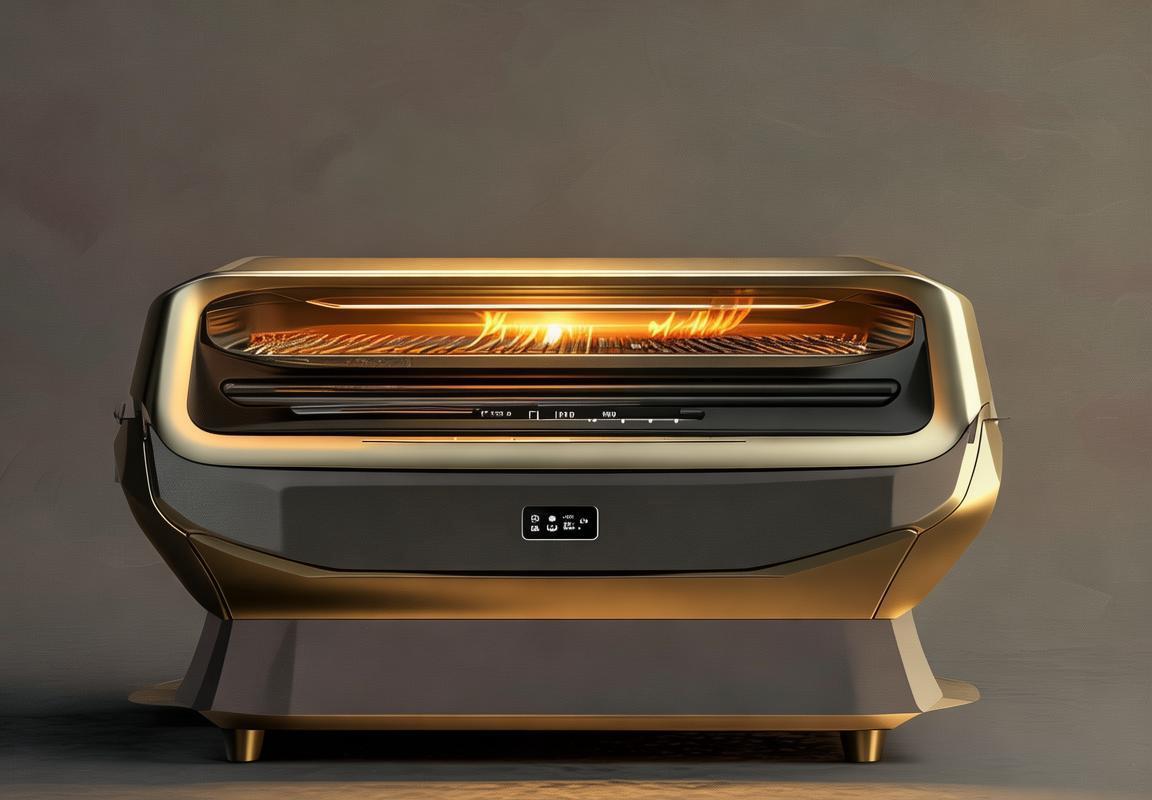
How to Get Started with Your Custom Contact Grill Project
Navigating through the world of custom contact grill projects can feel like embarking on a unique journey, especially when you’re starting from scratch. Here’s a step-by-step guide to kick off your custom contact grill project with confidence:
Understanding Your NeedsBefore diving into the design and customization phase, it’s crucial to have a clear understanding of what you’re looking for. Consider the size of the grill, the type of cooking you’ll be doing, and any specific features you want. Whether it’s for a professional kitchen or a personal barbecue enthusiast, knowing your requirements sets the foundation for your project.
Researching ManufacturersThe next step involves researching potential manufacturers. Look for companies with a reputation for quality and custom work. Check out their portfolio, read reviews, and perhaps reach out to them directly to discuss your project. Don’t hesitate to ask about their experience with similar projects and their process for handling custom orders.
Initial ConsultationOnce you’ve narrowed down your options, schedule a consultation with your chosen manufacturer. This meeting is a chance to convey your vision and gather expert advice. Be prepared to discuss details like materials, dimensions, and any unique specifications you have in mind. Remember, the more precise your requirements, the better the outcome will be.
Sketching and PrototypingAfter the consultation, the manufacturer will likely create a sketch or a 3D model of your custom contact grill. This is your opportunity to provide feedback and make adjustments. Prototyping is a key stage, as it allows you to visualize the final product and ensure it aligns with your expectations. Be open to making modifications during this phase to achieve the perfect design.
Material SelectionThe choice of materials is crucial for the longevity and performance of your custom contact grill. Whether you prefer stainless steel for its durability and easy maintenance or aluminum for its heat conductivity, each material has its own advantages. Discuss the pros and cons with your manufacturer to make an informed decision that suits your needs and preferences.
Design ApprovalOnce the design and materials are finalized, your manufacturer will present the approved design. This is your last chance to make any last-minute changes. Take your time to review the design, ensuring that it meets all your specifications and aligns with your aesthetic vision.
Production ProcessThe production phase can be a bit of a waiting game, depending on the complexity of your custom grill. During this time, your manufacturer will source materials, assemble the grill, and perform quality checks at various stages. Staying in touch with your manufacturer during this process can provide peace of mind and ensure that any issues are addressed promptly.
Quality AssuranceBefore your custom contact grill is shipped to you, it will undergo rigorous quality assurance tests. This includes checking for any manufacturing defects, ensuring all components are functioning correctly, and verifying that the grill meets all safety standards. A well-crafted grill is a product of attention to detail at every stage of the process.
Receiving and InstallationUpon receiving your custom contact grill, inspect it for any damage during shipping. If everything is in order, it’s time to install it in your designated space. Depending on the complexity of the installation, you may need to hire a professional to ensure everything is set up safely and correctly.
Maintenance and CareA custom contact grill is an investment, and proper maintenance is key to extending its lifespan. Your manufacturer should provide detailed instructions on how to care for your grill, including cleaning techniques, maintenance schedules, and any specialized care requirements. Regular maintenance not only keeps your grill looking new but also ensures optimal performance.
Customer Support and WarrantyEven after your custom contact grill is installed and you’ve begun using it, the relationship with your manufacturer doesn’t end. Most reputable manufacturers offer customer support and a warranty to cover any defects that may arise within a certain period. Knowing that you have a reliable support system in place can provide added peace of mind.
Community and NetworkingOnce you’ve completed your custom contact grill project, consider joining online forums or local barbecue groups. This not only allows you to share your experience with others but also opens up opportunities to learn from other grill enthusiasts. Networking can lead to new ideas for future projects or even collaborations with other manufacturers.
ConclusionEmbarking on a custom contact grill project is a journey that requires patience, clear communication, and a bit of trust. By thoroughly understanding your needs, carefully selecting a manufacturer, and actively participating in the design and production process, you’ll be well on your way to enjoying a grill that’s as unique as you are. Remember, the key to a successful project is clear communication and a willingness to collaborate throughout every step of the journey.